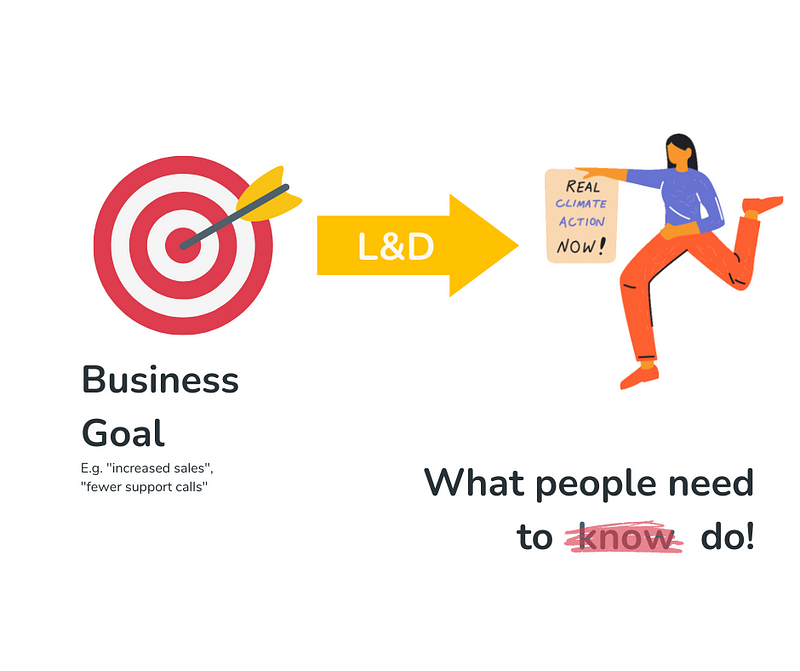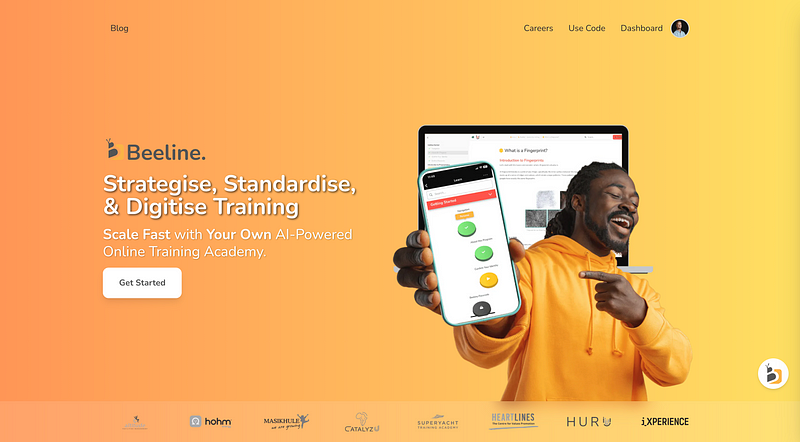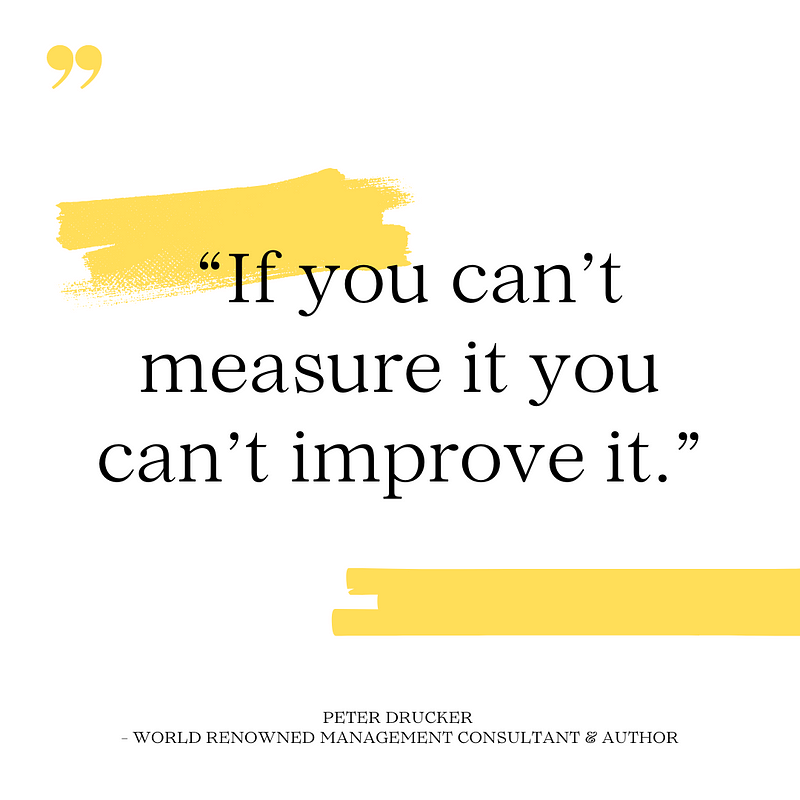A Blueprint for Success: Creating an Effective Digital Workforce Training Program

A Blueprint for Success: Creating an Effective Digital Workforce Training Program
Step-by-Step Guide to Empowering External Teams with a Top-Tier Training Academy
“There are only two ways for a manager to improve the output of an employee: motivation and training. Ironically, the biggest obstacle to putting a training program in place is the perception that it will take too much time. Keep in mind that there is no investment that you can make that will do more to improve productivity in your company. Therefore, being too busy to train is the moral equivalent of being too hungry to eat.” — Ben Horowitz, successful CEO & co-founder of Andreessen Horowitz
..being too busy to train is the moral equivalent of being too hungry to eat.
Training is often overlooked in the hustle and bustle of managing a growing business. Yet, as Ben Horowitz points out, the irony of neglecting training due to time constraints is a pitfall too many managers fall into.
This blog post will show you how to bypass this obstacle and build a robust digital workforce training program that will save you time in the long run and significantly boost productivity and service quality.
Why Read This Post?
In this step-by-step guide, you’ll learn how to create a digital training program tailored to empower your partners and external teams.
Whether managing a distributed workforce in the gig economy or seeking to standardise training across different regions, this blueprint will provide practical insights and actionable strategies.
This guide is for you if your goal is to enhance service quality and customer experience, ensure compliance, and foster continuous improvement and innovation in your company.
0. Start with WHY
Many managers know training is essential but struggle to link it directly to business outcomes. This disconnect can lead to training programs that don’t deliver measurable success, resulting in training that lacks direction and fails to improve service quality or operational efficiency.

For example, your “why” could be to improve customer satisfaction, increase sales, enhance compliance, or reduce error rates. Once these objectives are clear, you can design training interventions that directly contribute to achieving these goals.
By starting with a clear “why” and aligning training with business goals, you can set measurable objectives and key performance indicators (KPIs). This ensures your training is both relevant and impactful.
1. Needs Analysis and Clear Goals
Once you have a clear “why” and have aligned your training with specific business goals, the next step is to conduct a thorough needs analysis, this will help you pinpoint skills and knowledge gaps, preventing wasted resources on irrelevant training.

A needs analysis identifies the gaps in skills and knowledge required to achieve core business outcomes, ensuring training is targeted and effective.
Start by identifying skill gaps by mapping competencies and highlighting critical gaps. Utilise surveys, focus groups, and performance data to clearly understand your team’s needs. This ensures that your training addresses core issues and improves overall performance.
Next, set specific, measurable, achievable, relevant, and time-bound (SMART) goals based on your analysis. Action mapping can be a great tool here.
The goals you create should directly link training to your identified business outcomes, ensuring that every training activity contributes to measurable improvements.
Some examples of goals include:
- Customer Satisfaction: Improve customer satisfaction scores by 20% within six months by training customer service representatives in advanced communication skills.
- Sales Increase: Boost sales by 15% next quarter by training the sales team on new product features and effective selling techniques.
- Compliance: Provide targeted compliance training to all relevant employees and achieve 100% compliance with industry regulations within three months.
- Error Reduction: Reduce operational errors by 30% over the next six months by training employees in updated processes and best practices.

This targeted approach leads to consistent service quality and compliance, ultimately enhancing the effectiveness of your training efforts. Note: these goals should connect specific and measurable business objectives to clear behavioural or competency improvements.
2. Decisions, Decisions, Decisions — Curriculum Design
Start with Learning Objectives
Begin by setting clear learning objectives (LOs) aligning with your training goals. These objectives should stem directly from the needs analysis and business outcomes you aim to achieve. Define the main learning objective for the entire program and then break it down into sub-learning objectives that guide specific modules or topics.
Storyboarding
Before creating content, develop a storyboard that outlines the structure and flow of your training program; Miro is a great tool to consider here.
This storyboard should map out how various content and activities will address each learning objective. Revising and iterating on the storyboard with input from stakeholders will save time and ensure alignment with your goals.
Decide on Content Creation
Creating engaging and relevant content is the backbone of any training program. Decide whether you will create the content in-house or outsource it. If you choose to create it in-house, leverage the expertise of your team or subject matter experts. Use video production software, e-learning authoring tools like Articulate or Adobe Captivate, and interactive platforms like Kahoot or Quizlet to develop engaging materials. Also, consider a comprehensive platform like Beeline, which integrates these tools into a single place. If outsourcing, find reputable training content providers who specialize in your industry.
Choose Learning Methods
Different learning methods can enhance engagement and retention. Consider a mix of interactive and hands-on learning techniques. Simulations and role-plays are great for practical skills, while hands-on exercises and real-life scenarios can reinforce learning. Interactive elements like quizzes, polls, and discussion forums also enhance engagement. Decide on the balance of methods based on your workforce’s needs and the training goals identified in your needs analysis.
Select Delivery Methods & Technologies
A blended learning approach often yields the best results.
Combine digital, in-person, and on-the-job training to cater to various learning preferences. Digital platforms like an LXP (Learning Experience Platform) provide flexibility and scalability. In-person training allows for immediate feedback and hands-on practice, while on-the-job training ensures that learning is applied directly to real-world tasks.
Determine the best mix for your team and ensure all necessary technology and resources are in place. Ensure the platform you select can facilitate the media and delivery methods you require and is scalable and future-proof for a fast-moving industry.

3. Assessments and Measuring Success

Assessment is critical to ensure the effectiveness of your training program. Develop a variety of assessments, including quizzes, practical exams, performance evaluations, and open-ended responses, to measure knowledge retention and practical application. Clearly define metrics like completion rates, assessment scores, and specific on-the-job performance improvements perhaps unique to your company.
While multiple-choice questions offer efficiency, they often miss higher-order thinking skills. AI-powered assessments can address this gap by evaluating complex responses and providing personalised feedback. This approach enhances learning by explaining what was wrong and why and can adapt to individual learning styles.
Utilise both formative and summative assessments to ensure a comprehensive evaluation of learner capabilities. Formative assessments, like quizzes and open-ended questions, provide ongoing feedback during learning. In contrast, summative assessments, like final exams and performance evaluations, measure overall competency at the end of the training.
Using a mix of assessment types ensures a thorough and effective measurement of learning outcomes.
(Recommended) 3.1 Pilot Program
In the world of startups, the term “MVP” or “Minimum Viable Product” refers to a simplified version of a product with essential features designed to test core assumptions and gather early user feedback. It allows startups to validate their ideas quickly and cost-effectively, enabling rapid iteration based on real-world insights and fostering customer engagement.
Similarly, testing the waters with a pilot program can be crucial before a full-scale launch. This approach allows you to gather valuable feedback, make necessary adjustments, and ensure your training program meets its objectives. By validating your training strategies early, you can optimize effectiveness and set the stage for long-term success.
SAM, or Successive Approximation Model, is a great Instructional Design framework to become acquainted with. This framework focuses on rapid prototyping and the testing of multiple training solutions.

How to Create a Pilot Training Programme
Start by selecting a small, representative group from your target audience to participate. This allows you to gauge the academy’s effectiveness and gather valuable feedback.
Collect iterative feedback through surveys, interviews, and performance metrics to identify strengths and areas for improvement — and use these insights to refine your content, delivery methods, and learning activities. This strategic approach ensures your final program (and enabler technologies!) is well-tuned, effective, and ready for large-scale implementation.
4. Scaling and Optimisation
Scaling your training program to accommodate more learners or new topics can be challenging, but leveraging technology like Learning Management Systems (LMS) makes it manageable. Start by expanding your infrastructure to support growth without sacrificing quality.
Update your content and delivery methods regularly based on feedback and performance data to ensure continuous improvement. This iterative approach keeps your training program dynamic and effective, meeting your organisation's evolving needs.
5. Continuous Improvement and Adaptation
Collecting feedback from trainees and monitoring the effectiveness of your training program is essential for continuous improvement. Regularly review assessment data and feedback to identify areas that need improvement.
Adapt your training methods and materials based on this feedback to ensure they remain relevant and effective. Implementing an iterative process of assessment and adaptation ensures that your training program evolves with the needs of your workforce and business goals.
Conclusion
Creating an effective digital workforce training program is essential for boosting productivity, ensuring compliance, and maintaining high service quality.
By following this blueprint — starting with a clear “why,” conducting a thorough needs analysis, designing engaging content emerging from clear learning outcomes, implementing robust assessments, launching a pilot program, scaling strategically, and continuously improving — you can empower your external teams and achieve significant business outcomes.
Start today and transform your training approach to unlock your team’s full potential.
Frequently Asked Questions
What are some specific examples of companies successfully implementing digital workforce training programs?
Specific examples of successful digital workforce training programs include companies like IBM and Huru in South Africa.
IBM developed a comprehensive digital learning platform that offers a wide range of courses and certifications, which has helped them enhance the skills of their global workforce.
Huru implemented a training program for partners working in Postnets nationwide, focusing on fingerprint analysis. They utilised Beeline (a modern training partner and platform) to deliver this program, leveraging its e-learning modules and interactive content to train employees, significantly improving their service quality and operational efficiency.
How can small businesses with limited resources create and scale digital training programs effectively?
Small businesses with limited resources can create and scale digital training programs by leveraging cost-effective tools and platforms.
To create engaging training content, they can start with affordable or free e-learning authoring tools like Google Classroom or Canva. Partnering with industry experts for content creation and delivery can also help develop high-quality training material without incurring significant costs.
To scale the program, small businesses can use cloud-based Learning Management Systems (LMS) or Learning Experience Platforms (LXP) that offer scalability and flexibility at a reasonable cost. Additionally, combining online and on-the-job training, focusing on blended learning approaches, can maximise resource utilisation and ensure the practical application of skills.
What are the potential challenges or common pitfalls in implementing a digital workforce training program, and how can they be mitigated?
Implementing a digital workforce training program can present several challenges, such as resistance to change from employees, technical issues, and ensuring consistent engagement.
To mitigate these challenges, it is crucial to communicate the training program's benefits clearly and align it with the company’s overall goals to gain buy-in from employees.
Providing technical support and conducting initial training sessions on digital platforms can help address technical issues. Incorporating interactive elements such as quizzes, gamification, and discussion forums into the training content can ensure consistent engagement. Regular feedback and continuous improvement of the training material based on employee input can also help maintain high engagement levels.
If this post and the future of work and workplace training spark your interest, consider this an invitation to collaborate with us at Beeline. We’re at the forefront of this educational evolution and eager to guide others. Let’s navigate this innovative landscape together and unlock people's full potential through your learning and training programs.

If you like my writing, subscribe to my list to receive occasional emails about whatever I am digging into and feel will be valuable to you creatively 😊